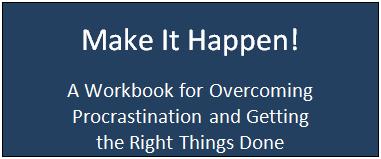
Let’s be a little more grateful today.
Did you know that studies show that practicing gratitude can increase your happiness levels by about 25 percent? This fact was reported by Robert Emmons, PhD–one of the world’s foremost experts on gratitude– in his book, “Thanks! How the New Science of Gratitude Can Make You Happier”.
 So, how can you bring more gratitude into your life? One way is by practicing gratitude exercises. In order to help you with this I put together a list of 22 gratitude exercises that will help you to bring more thankfulness, appreciation, and gratefulness to your life. Read through the list, choose the ones that appeal the most to you, and get started increasing your gratitude and boosting your happiness levels. After all, a little gratitude goes a long way.
So, how can you bring more gratitude into your life? One way is by practicing gratitude exercises. In order to help you with this I put together a list of 22 gratitude exercises that will help you to bring more thankfulness, appreciation, and gratefulness to your life. Read through the list, choose the ones that appeal the most to you, and get started increasing your gratitude and boosting your happiness levels. After all, a little gratitude goes a long way.
1. Morning Coffee Gratitude. As I’ve written before, one of the best ways to start your day off right is to spend a few minutes thinking of all the things that you’re grateful for. If you’re worried about finding the time to do this, or finding a way to remember to give thanks each morning, tie your morning gratitude session to your morning cup of coffee.
While you’re having your first cup of coffee, sit back and think of the things that you’re thankful for. You can even start out by feeling gratitude for the following:
- The warmth of the coffee mug you’re holding;
- The aroma of the coffee;
- That first sip of coffee;
- The beautiful morning;
- The beginning of a new day full of promise;
- The quiet just before the day officially starts.
2. Grace Before Meals. Giving thanks before each meal recognizes all of the people whose hard work was necessary for you to have food on your table–everyone from the farmer who grew the food, the grocery store clerks who stocked the shelves at your local grocery store, and the person who cooked the meal.
It’s a moment to pause and be mindful, as well as feel blessed that you have all of the food and nourishment that you need.
But what if you’re not religious? Then say a Secular Grace. Here’s one example:
“For the meal we are about to eat,
for those that made it possible,
and for those with whom we are about to share it,
we are thankful.”
You can even write your own.
3. Things You Take For Granted. Imagine losing some of the things that you take for granted, such as your home, your ability to see or hear, your ability to walk, or anything that currently gives you comfort. Then imagine getting each of these things back, one by one, and consider how grateful you would be for each and every one.
4. Put Things in Perspective. Obviously, things won’t always go your way. However, gratitude isn’t an emotion that is reserved for those moments when you get what you want. When things go wrong you can use the power of gratitude to release some of the negative emotions that you may be feeling due to the failure or setback that you just experienced.
After a negative event put things in perspective by remembering that every difficulty carries within it the seeds of an equal or greater benefit. When faced with adversity, ask yourself the following questions:
- “What’s good about this?”
- “What can I learn from this?”
- “How can I benefit from this?”
- “Is there something about this situation that I can be grateful for?”
5. Gratitude Journal. The practice of keeping a gratitude journal was made famous by Sarah Ban Breathnach in her book, “Simple Abundance: A Daybook of Comfort and Joy”.
Before going to bed each night, write a list of five things about that day for which you’re grateful. Some days you’ll have exciting things to write down, and some days you’ll be writing down simple joys. Here’s a quote from “Simple Abundance”:
“As the months pass and you fill your journal with blessings, an inner shift in your reality will occur. Soon you will be delighted to discover how content and hopeful you are feelings.”
6. Gratitude Letter. Sit down and write a letter to someone who has exerted a positive influence in your life but whom you have not properly thanked. This can be a teacher or a mentor from your past, a grandparent, or anyone else who helped you in some way.
The letter doesn’t have to be long, but make sure that you’re specific about what the person did and how it affected you.
7. Gratitude Visit. Some experts recommend that you take the gratitude letter a step further: instead of mailing the letter, visit the person to whom the letter is addressed and read them the letter in person.
8. Gratitude Charm Bracelet. Get yourself a charm bracelet and choose charms or trinkets that are meaningful to you. For example, you could have the following charms:
- A heart to symbolize your significant other;
- Figurines to represent different family members;
- An apple to represent health;
- A dollar sign to symbolize financial serenity;
- A charm that represents your current profession; and
- A charm that makes you laugh to represent humor and joy.
Each time that you see your charm bracelet you’ll be reminded of how much you have to be grateful for.
9. Gratitude Stroll. Go for a walk and see how many positive things you can find: the smell of freshly baked bread coming from the bakery, flowers growing on a window sill, a cloudless sky . . .
10. Gratitude Trigger. Place an object somewhere in your house or workspace which will remind you to feel grateful each time that you look at it. It can be a little sign that says “Thank You” hanging in front of your desk, or a door mat with the word “Welcome” written on it to remind you to be grateful each time that you arrive at home.
11. Gratitude Partner. Find someone, it can be a friend or a family member, and share what you’re grateful for with each other. You can feed off of each others’ ideas. In addition, if the other person knows you well they can remind you of things you may be leaving out or things you’ve forgotten.
12. Rampage of Appreciation. This is an exercise recommended by Abraham-Hicks. Here’s an explanation of the exercise:
“Begin by looking around your immediate environment and gently noticing something that pleases you. Try to hold your attention on this pleasing object as you consider how wonderful, beautiful, or useful it is. And as you focus upon it longer, your positive feelings about it will increase.
Now, notice your improved feeling, and be appreciative of the way you feel. Then, once your good feeling is noticeably stronger than when you began, look around your environment and choose another pleasing object for your positive attention.”
13. Through the Eyes of Another. Sometimes we get so used to the good things in our life that we stop feeling appreciation for them. In that case, find a way to see the things, people, and places that you love through the eyes of another. For example, do the following with a friend:
- Take them to your favorite coffee shop;
- Lend them your favorite book or take them to see your favorite movie;
- Show off a collection that you’re proud of;
- Introduce them to your significant other; and so on.
This will allow you to see the ordinary details of your life through the eyes of another, giving you a fresh perspective and rekindling your appreciation for these things.
14. Gratitude for Gadgets and Tools. Take a moment to think of all the gadgets and tools which make your life easier and more enjoyable. Include your laptop computer, your coffee maker, your TV, your juicer, your refrigerator, and so on.
Allow yourself to appreciate and feel gratitude toward all those people who made it possible for these gadgets and tools to be in your home, making your life so much more convenient.
15. Thankful Tree. This is a great exercise for Thanksgiving. Here are the instructions:
- Arrange tree branches in a colorful planter.
- Cut out paper leaves in different colors, shapes, and sizes.
- Place the leaves in a bowl, along with magic markers, and put the bowl next to the tree branches.
- Have each guest pick a leaf, write down something that they’re grateful for on it, and hang the leaf from the tree branches.
16. Four Questions. A great way to bring things that you’re grateful for to the forefront of your mind is by asking yourself questions. At the end of each day, ask yourself the following four questions:
- What touched me today?
- Who or what inspired me today?
- What made me smile today?
- What’s the best thing that happened today?
17. Gratitude Lookout. Decide on a day during which you’re going to be on the lookout for people you can thank. Actively watch for things that others do that are helpful, kind, and considerate. Be generous with your “thank yous”.
18. Gratitude Inventory. Create a list of 100 things that you’re grateful for. If it helps, divide your list into different categories, such as assets (things you own), people (your relationships), qualities (personal qualities and character traits), experiences (place you’ve visited and things you’ve done), and so on.
Here’s a collection of prompts to help you create a list of 100 things you’re grateful for.
19. 365 Thank You Notes. In my post, How Gratitude Can Change Your Life – The Power of “Thank You“, I wrote about a man named John Kralik who felt that everything was going wrong in his life. That’s when he decided to set a New Year’s resolution of writing 365 thank you notes, one for each day of the year.
He spent the entire year looking for people he could thank, including the barista at Starbucks, his daughter’s teacher, the people at his office, and so on. By the end of the year he discovered that this gratitude exercise had transformed his life.
20. Going Around the Table. This is another great exercise for Thanksgiving. I wrote about it in my post Family Rituals and Traditions – Add Joy, Beauty, and Connection to Your Life. When setting the Thanksgiving table, place an index card and pen at each place setting. Here are the instructions for this exercise:
- Each person writes the name of the person to their left at the top of the card, and then writes something about that person for which they are thankful.
- The card is passed to the right so the next person can add to the list.
- Eventually, each card will make its way around the table. Take turns reading the thank-you cards aloud after the meal.
21. Appreciation Chair. This is another exercise which you can use on Thanksgiving. Pick a chair and designate it as “the Appreciation Chair”. Each family member takes a turn sitting on it. Then, everyone else tells that person why they appreciate them and expresses their gratitude for any kindness that was shown during the year, any help that was given, and so on.
22. Ungrateful Thought. Acknowledge one ungrateful thought per day, and transform it into a grateful one. Here’s an example from my own life:
- Ungrateful Thought: My sister spoke harshly to me today for absolutely no reason. I know that she’s under a lot of stress, but I was over at her house helping to take care of her kids. I don’t deserve for her to treat me like that.
- Grateful Thought: My sister is there for me when I need her. I know that I can count on her. I’m lucky to have her as a sister.
Conclusion
Which of these gratitude exercises do you plan on using? Do you know of any other gratitude exercises? Allow the power of gratitude to enter your life and change your life for the better.
Read Next: 8 Ways to Practice Gratitude to Boost Your Wellbeing





Related Posts:




 Marelisa Fabrega is a lawyer and entrepreneur. She holds a Bachelor of Science in Business Administration from Georgetown University in Washington, D.C., as well as a Juris Doctor from the Georgetown University Law Center. You can learn more about her
Marelisa Fabrega is a lawyer and entrepreneur. She holds a Bachelor of Science in Business Administration from Georgetown University in Washington, D.C., as well as a Juris Doctor from the Georgetown University Law Center. You can learn more about her 






Comments on this entry are closed.
What a great post! I’m an ardent gratitude practitioner and I’ve never heard nor thought of some of these. Especially loving the index cards around the table. So lovely!
Thanks.
Love and blessings,
Sue
Hi Sue: I thought that since we’re in November, I’d write a post about gratitude. I’m glad you found some new ideas. 🙂
Hi Marelisa,
I love your idea of using gratitude around the table. We are definitely going to use this the next time we get together with our family.
Your suggestions about using objects to remind us to be grateful.
Wouldn’t it be wonderful if gratitude was taught by parents along with “thank you”?
I love this list! I enjoy the morning cup of coffee gratitude every day, along with a nightly cup of tea 🙂 Really like the idea of using a charm bracelet to help remember you the main things you are thankful for each and every day.
Fantastic post, thanks so much, love them all. One more, made by, keeping little stone ore penny in you pocket and every time you put your hand in the pocket you feel the stone or penny and that is a reminder of filling your thought of gratitude:-))
Thank you Marelisa for the 22 gratitude exercises. I have actually already started a 365 things I am grateful for in 2015 at Pinterest recently and every night when I come back from work, I look forward to pin more things I am grateful for the day:)
Dear Marelisa,
I create worship for a Unitarian Universalist Congregation in Petaluma,
CA. I came across, your image of gratitude words in different languages embedded in your article. I would like to use it on the cover of our Sunday worship Order of Service, since our monthly theme is gratitude.
Thank you,
Ellen Beeler
Love this…
especially the “gratitude tree”..:)